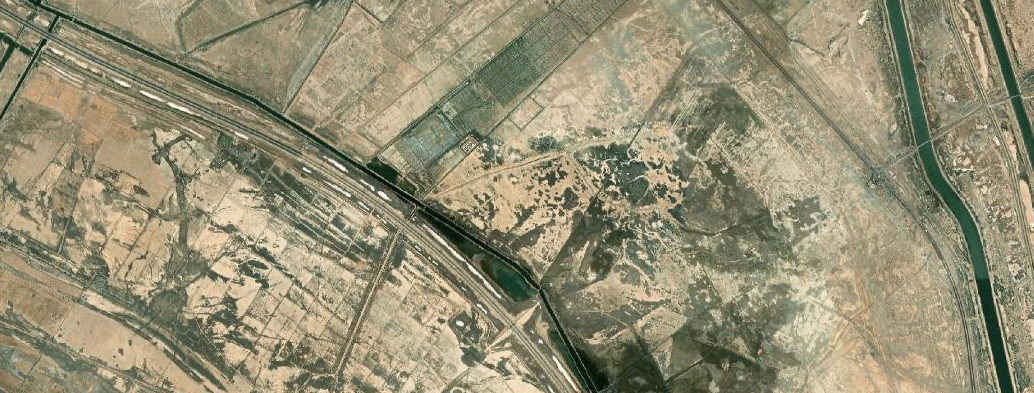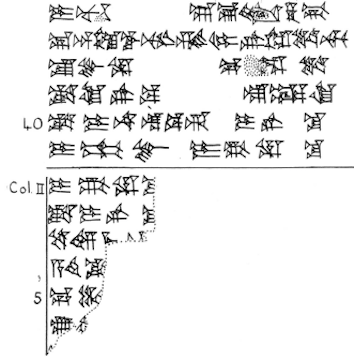Eamaškuga (temple of Ningal at Kissik)

During the reign of Babylon's last native king, Nabonidus (r. 555–539 BC), work was undertaken on rebuilding Eamaškuga, the temple of the goddess Ningal. This temple is presumably the same religious building Eamašku, which was dedicated to the goddess Inanna in the Sumerian literary composition Inanna's Descent to the Netherworld.
Names and Spellings
This temple went by the Sumerian ceremonial name Eamaškuga, which means "House, Pure Sheepfold."
- Written Forms: e₂-amaš-ku₃: e₂-amaš-ku₃-ga.

Hand-drawn facsimile of the relevant passage of the Akkadian inscription of Nabonidus preserved on IM 055296 that records his rebuilding of Eamaškuga. Image cropped from H.W.F. Saggs, "A Cylinder from Tell al Lahm," Sumer 13 (1957) pl. 2.
Known Builders
- Neo-Babylonian (ca. 625–539 BC)
- Nabonidus (r. 555–539 BC)
Building History
A damaged, two-column clay cylinder with an Akkadian inscription of Nabonidus records that that Neo-Babylonian king had Eamaškuga rebuilt since it was old and dilapidated. The relevant passage of that text reads:
Due to the inscription's poor state of preservation, no information about Nabonidus' roofing and decoration of that temple are known.
Archaeological Remains
Eamaškuga has not yet been positively identified in the archaeological record.
Further Reading
- George, A.R. 1993. House Most High. The Temples of Ancient Mesopotamia (Mesopotamian Civilizations 5), Winona Lake, p. 68 nos. 60–61.
Banner image: satellite image of Tell al-Laḥm.
Jamie Novotny & Joshua Meynell
Jamie Novotny & Joshua Meynell, 'Eamaškuga (temple of Ningal at Kissik)', Babylonian Temples and Monumental Architecture online (BTMAo), The BTMAo Project, a sub-project of MOCCI, [http://oracc.org/btmao/Kissik/Eamashkuga/]